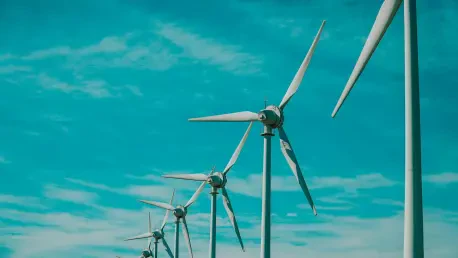The offshore wind industry has become a battleground for state and federal jurisdictions, exemplified by the dispute between the Maryland Department of the Environment (MDE) and the U.S. Environmental Protection Agency (EPA). This tension is highlighted by the procedural disagreement over the appeals process for an air pollution permit issued to US Wind, a company planning a significant wind farm off the coast of Ocean City. Maryland’s stance, rooted in its interpretation of state law, clashes with federal procedures advocated by the EPA, leading to intricacies in environmental regulation and governance. As various authorities wrestle for control, the potential impact on renewable initiatives and local governance hangs in the balance.
Regulation and Jurisdiction
Maryland’s Legal Perspective
Maryland defended its procedure for issuing permits, adhering strictly to state laws, which it claims are appropriate for adjudicating state-issued permits. This viewpoint supports Maryland’s decision to refuse the reissuance of the permit despite the EPA’s arguments. The state points to existing precedents from EPA appeals board decisions affirming that the EPA board lacks jurisdiction over this type of permit. Maryland’s resistance highlights its desire to retain autonomy over environmental decisions within its borders, emphasizing the importance of local governance in such matters. While Maryland insists on sticking to state protocols, the EPA’s stance presents a challenge that exposes a circuitous conflict between local and federal governance.
EPA’s Challenging Approach
On the other hand, the EPA, questioning the procedural integrity of Maryland’s permit process, posits that appeals concerning air pollution permits should be directed to its Environmental Appeals Board instead of state courts. The federal agency argues that procedural errors demand oversight and correction at a national level to maintain standards established under environmental law frameworks like the Clean Air Act. This conflict with Maryland’s jurisdictional approach underscores the broader debate around federalism and state sovereignty in environmental regulation, complicating the path to resolving the current standoff. However, given that the window for state court appeals has expired, the situation has reached a procedural deadlock, with no immediate resolution in sight.
US Wind’s Ambitious Project
Project Plans and Potential Impact
US Wind’s offshore wind project envisions the construction of 121 wind turbines, complemented by substations and a meteorological tower approximately 10 miles off Ocean City’s coast. With the capacity to potentially power up to 718,000 homes, the project represents a significant stride toward renewable energy goals. The widespread adoption of such initiatives promises to accelerate the shift toward sustainable energy paradigms. On the environmental front, US Wind symbolizes progress yet faces criticism rooted in local concerns over impacts on coastal views and aesthetics. Thus, as the project pushes forward, it navigates a complex landscape of ambition versus environmental sensitivity.
Local Opposition and Challenges
Local authorities and residents in Ocean City have voiced concerns regarding the project’s possible influence on scenic coastal views, a critical component of the region’s tourism appeal. The aesthetic implication of such large-scale developments presents a polarizing issue, resulting in community hesitance despite potential benefits in sustainable energy production. Challenges abound not just in generating consensus among stakeholders but in negotiating the delicate balance required to harmonize local interests with broader environmental goals. This underscores a persistent narrative in renewable energy projects, where the dichotomy between advancing such initiatives and mitigating local objections continues to shape outcomes.
Navigating Renewable Energy Amid Political Influence
Federal Policy and Implications
Since President Donald Trump’s administration, offshore wind projects like the one proposed by US Wind have faced intensified scrutiny and shifts in policy direction. The changing political landscape has seen reversals in incentives and support measures that previously bolstered renewable sectors, complicating the path for project financiers and developers. This unpredictability injects uncertainty into the sustainability narrative, where federal policy impacts not only project feasibility but also investment trends and stakeholder confidence. The political backdrop is thus a pivotal force, shaping both obstacles and opportunities within the renewable frontier.
Broader Implications for Renewable Initiatives
Despite existing challenges, the broader narrative around renewable energy remains vital, highlighting the need for harmonizing perspectives across governmental levels. The Maryland and EPA dispute exemplifies a broader struggle in aligning state and federal viewpoints toward cohesive environmental strategies. It further emphasizes the importance of dialogue and negotiation in crafting policies that balance growth, sustainability, and local concerns. While renewable energy projects confront intricate regulatory terrains, collaboration across jurisdictions emerges as a critical pathway toward achieving substantial environmental goals without sacrificing regional values.
Moving Forward
The offshore wind industry is at the heart of a contentious debate over jurisdiction between state and federal entities. This is best illustrated by the ongoing conflict between the Maryland Department of the Environment (MDE) and the U.S. Environmental Protection Agency (EPA). The core of the issue is a procedural disagreement over an appeals process concerning an air pollution permit given to US Wind, a company planning a large-scale wind farm off Ocean City’s coast. The dispute arises from Maryland’s interpretation of its state law, which conflicts with the federal procedures that the EPA insists upon. This clash has resulted in a complex landscape of environmental regulation and governance. As these various authorities struggle for jurisdictional control, there are broader implications for both renewable energy projects and how local governance is managed. The potential outcome of this clash holds significant consequences for the future of renewable energy initiatives and the balance of authority between state and federal levels.









